[[{“value”:”
“The roughly linear increase in specific power” of ICE vehicles over the past 50 years “does not appear to be slowing”: EPA.
By Wolf Richter for WOLF STREET.
Overall fuel economy of passenger vehicles sold in the US of the model year 2024 rose to a record of 28.0 “real world” MPG, according to data released by the EPA today. Over the five model years since 2019, average fuel economy has surged by 3.1 MPG, or by +12% (red line).
The standout over the past few years was the category of “Car SUV” (light blue), whose average MPG spiked by 47% since the 2019 model year. They’re SUVs based on a car chassis and include the #2 bestseller of all models in the US, the Tesla Model Y, whose sales exploded since production started in 2020. Other EVs in that category have also come along. EVs are far more efficient than ICE vehicles (including hybrids). The Model Y for 2024 has an equivalent fuel economy of 113.8 “real world MPG,” and the average for all EVs for the 2023 model year was 106.7 MPG, according to the EPA today.
For the 2024 model year, progress in the car SUV category flattened out after the spike, while the MPG in all other categories continued to tick higher.
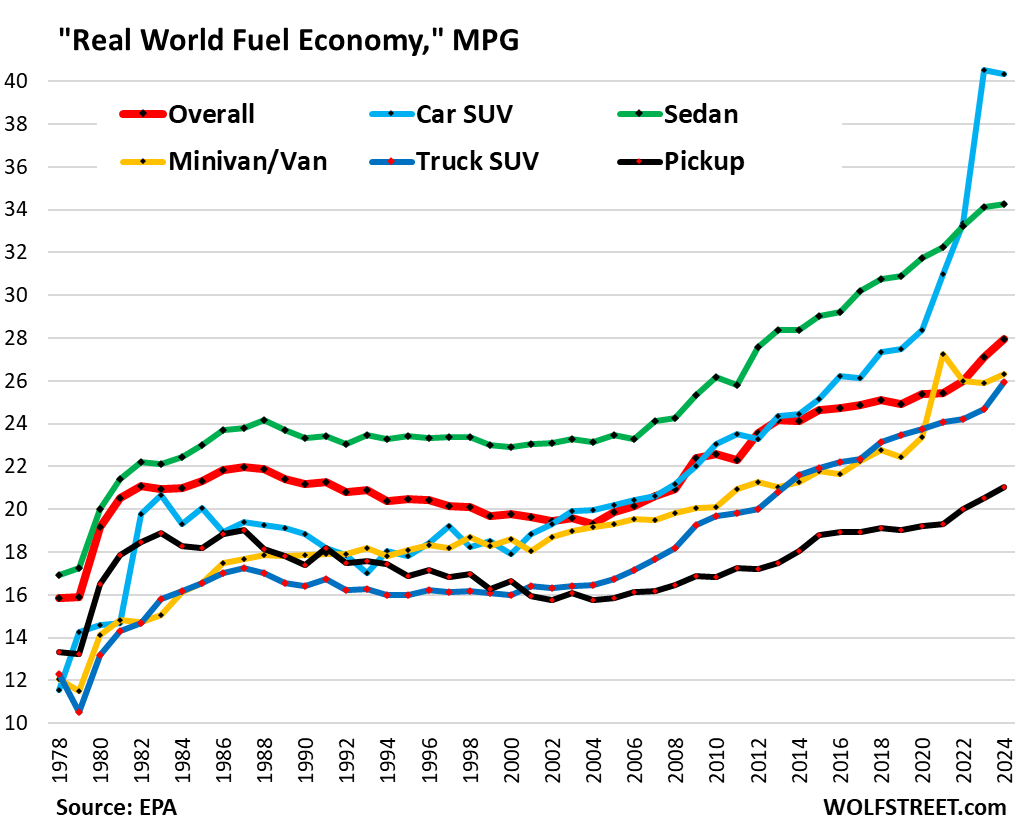
The data comes from the EPA’s Automotive Trends Report for 2024, released today. The EPA collected this data from automakers for vehicles produced for the US. The EPA divides vehicles into five basic categories: Sedan, “car SUV,” minivan/van, pickup, and “truck SUV” (SUV that by weight or by chassis is closer to a truck than a car).
The longer-term trends boil down to this: more fuel-efficient, more powerful, and heavier.
The Horsepower War.
Overall average horsepower for the 2024 model year rose to a record 267 hp, from 245 hp in the 2019 model year (red in the chart below).
Since 1981, average horsepower has increased by 161%, from the low of 102 hp for the 1981 model year, the nadir of US auto design, when automakers were struggling with emission control requirements. Horsepower started rising again with fuel injection and electronic engine management systems that became more common in the mid-1980s.
Pickups dominate in the horsepower war. The model year 2011 was when they averaged over 300 hp for the first time. For the model year 2024, the average rose to a new record of 347 hp.
EV pickup truck production and sales are ramping up: Ford F-150 Lightning, Tesla Cybertruck, Rivian R1T, and GM’s Silverado EV and Sierra EV currently start with close to 600 hp and go up from there, which is nuts. But they’re new arrivals and don’t weigh in the data yet. As production volume and sales build over the next few years, they will push the horsepower averages even higher.
Overall market share of EVs rose to 9.0% in Q3, and their increased market share will be pushing the horsepower readings even higher going forward.
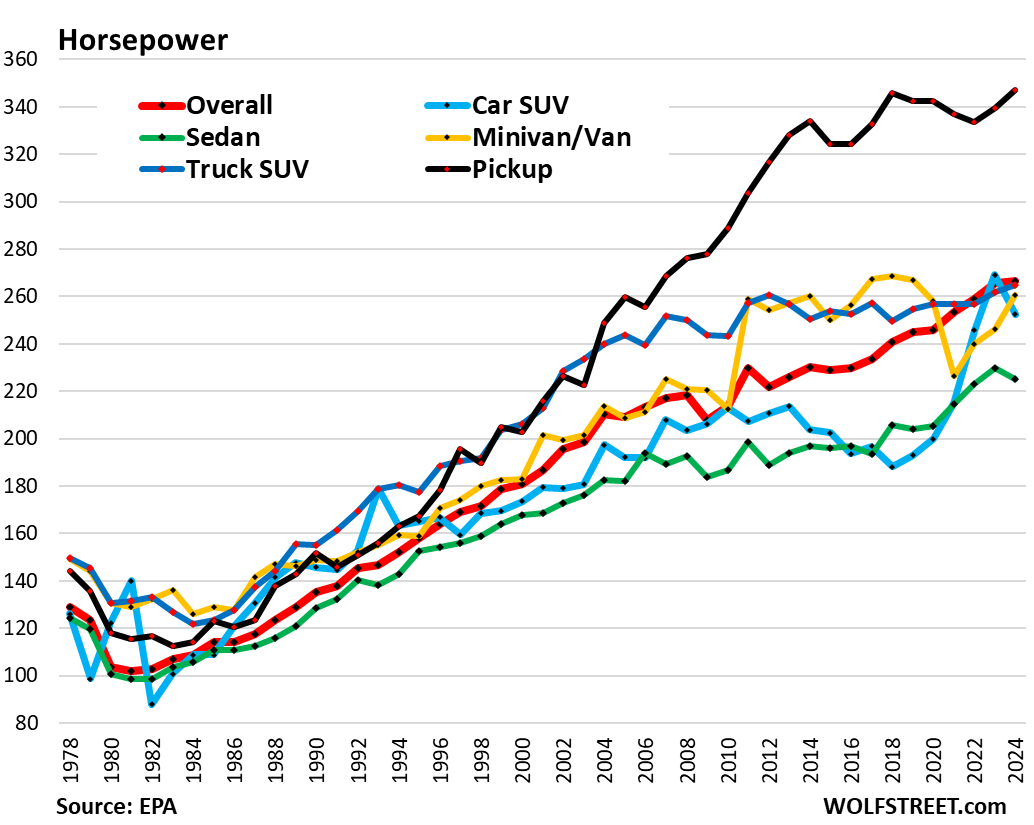
Automakers made huge progress in ICE technology.
This increase in power with internal combustion engines over the years has occurred as average displacement (engine size) has gotten smaller, and power output relative to engine size has increased.
The specific power of internal combustion engines has increased by about 0.02 horsepower per cubic inch per year for the past 50 years, the EPA said in the report.
For example, for a 302 cubic inch engine, this translates into an average horsepower gain of 6 hp per year, or a gain of 300 hp over the 50 years.
And we can see that. The 2024 Ford Mustang 5.0L Coyote V8 (302 cu. in.) generates 500 hp (about 100 hp per liter). Back in the day, a 1978 Mustang II with the 302 V8 generated about 140 hp (28 hp per liter). The 2024 Mustang’s 2.3L four-banger EcoBoost engine generates 315 hp, or about 137 hp per liter. Over the decades, automakers have made huge progress with their ICE technologies.
“The roughly linear increase in specific power [of ICE vehicles] does not appear to be slowing,” the EPA report said.
To illustrate these trends, the EPA provided a chart of the percentage changes since 1975 for ICE-only vehicles of three key metrics:
- Horsepower per displacement (such as hp/L) which more than tripled (+210%).
- Fuel consumption per displacement, which dipped by 11%.
- Fuel consumption per horsepower fell by 70%.
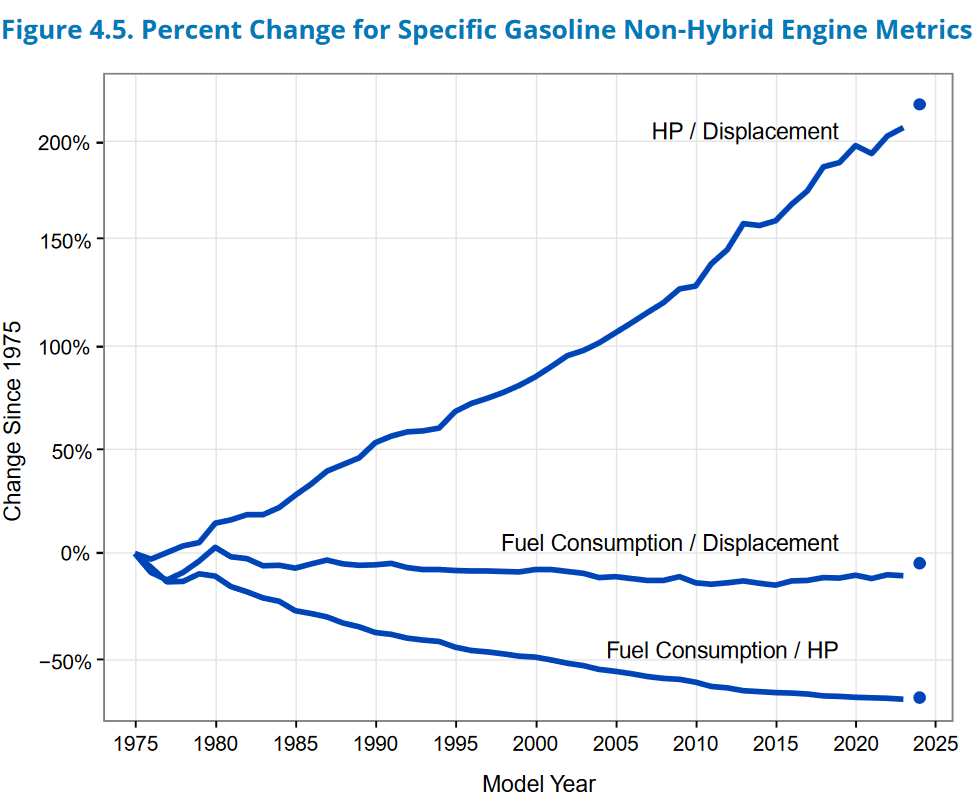
But Power, luxury, and fancy stuff weigh more.
Overall vehicle weight rose to 4,419 lbs (red). There is a wide range of weight, depending on type of vehicle, equipment, and configuration. And power is heavy.
Pickup trucks were the heaviest. Overall, their average weight rose to 5,397 lbs, according to the EPA today. Big 4X4 4-door pickups with 500 hp and up are the heaviest. For example, a Ford 4×4 Crew Cab pickup with a big diesel weighs in at 6,500 to 7,500 pounds, according to Ford specs. Four-door 4×4 EV trucks with 600-plus horsepower, such as the Cybertruck, are in the 6,500 to 6,900 lbs range. ICE pickups with two doors, rear-wheel drive, and base engines start at about 4,600 lbs.
Sedans are the least heavy. Their average weight rose to a record 3,676 lbs (green), about 2,000 lbs. lighter on average than pickups.
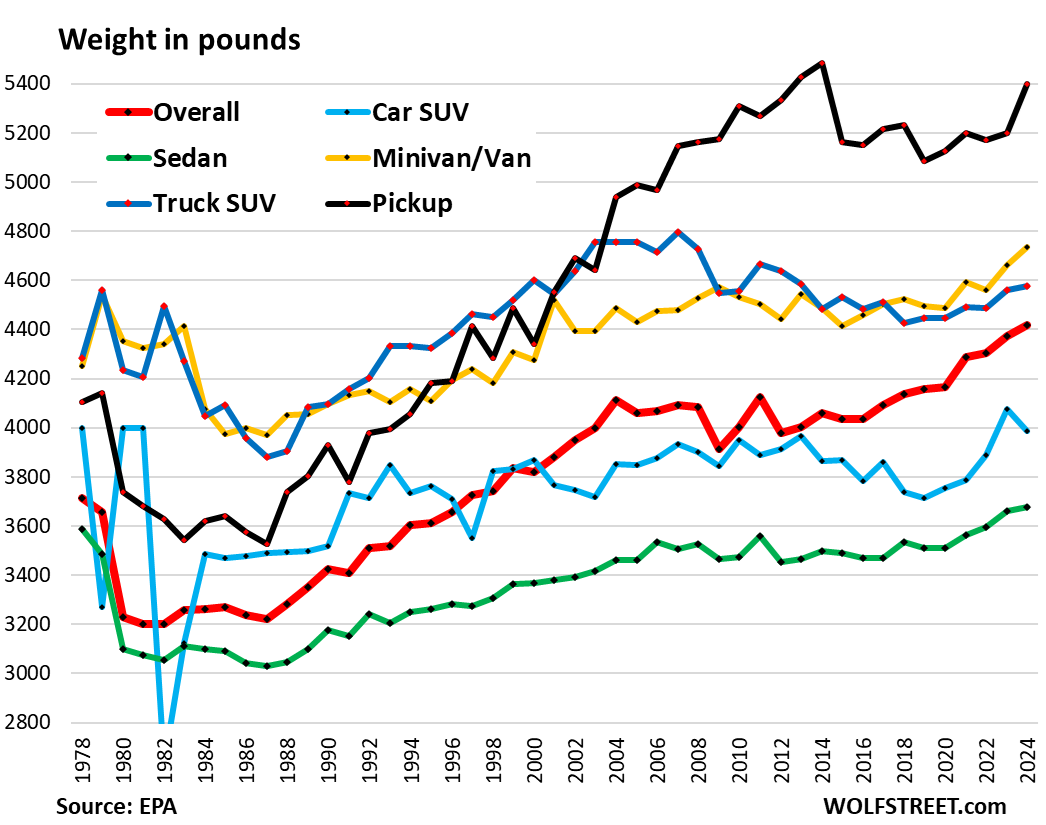
And it costs a lot more…
…as documented by our infamous F-150 XLT & Camry LE Price Index, which tracks the MSRPs by model year of the base Ford F-150 XLT and the base Camry LE going back to 1990. For details, including the historic price cut for the 2025 base F-150 XLT and the historic price increase for the 2025 base Camry LE, now only available as a hybrid, please read our article about it.
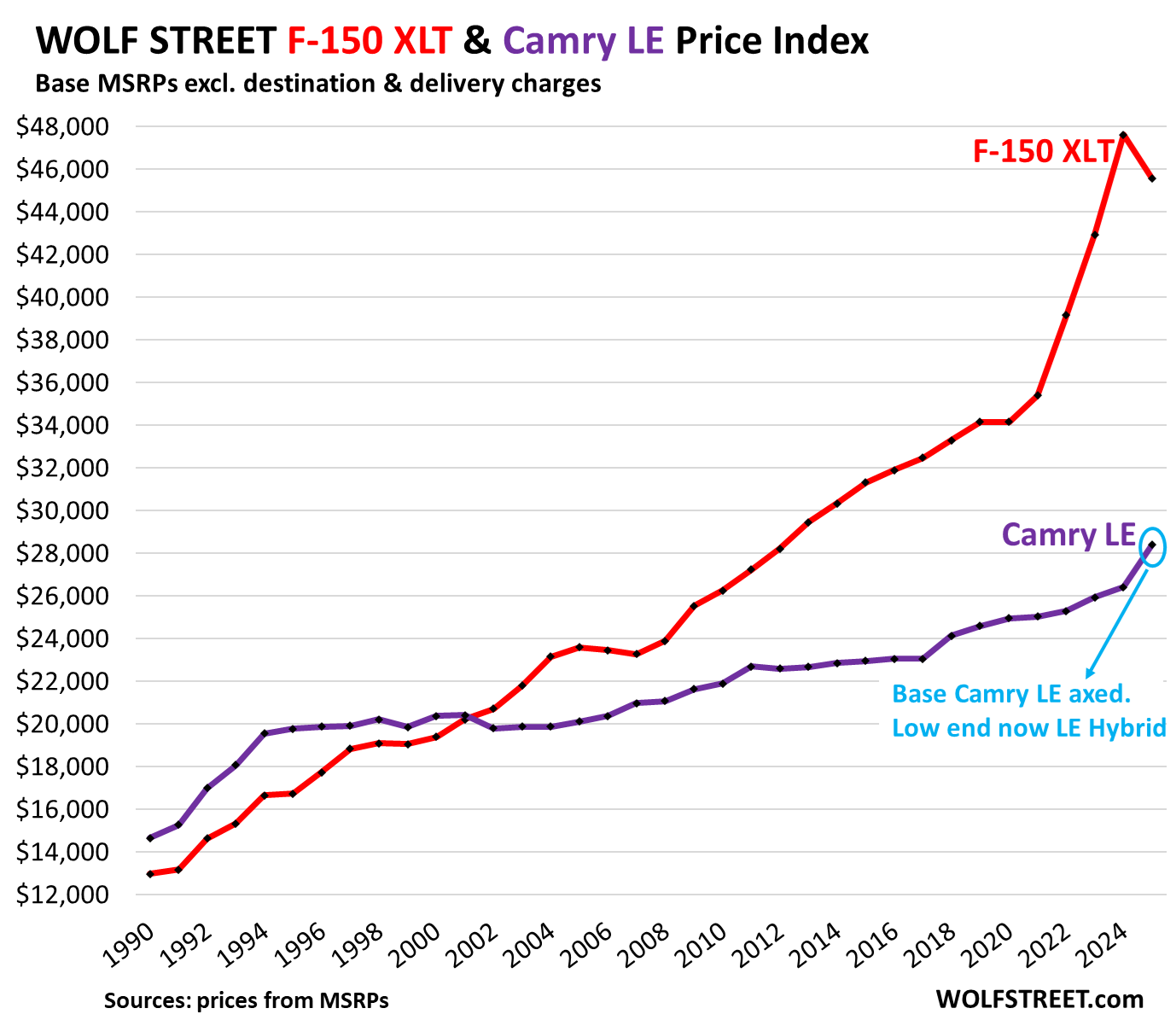
We give you energy news and help invest in energy projects too, click here to learn more
Crude Oil, LNG, Jet Fuel price quote
ENB Top News
ENB
Energy Dashboard
ENB Podcast
ENB Substack
The post Americans Buy Ever Bigger, More Powerful, More Fuel-Efficient Trucks, SUVs & Cars. EVs Escalate the Horsepower War appeared first on Energy News Beat.
“}]] 
